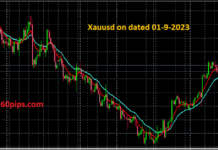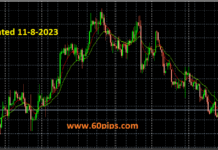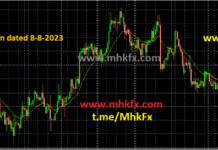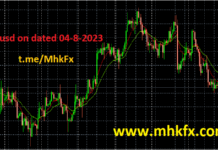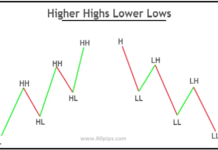
In the dynamic and fast-paced world of forex trading, understanding and effectively utilizing various patterns is crucial for success. Patterns can provide valuable insights into market trends, offering traders the opportunity to identify potential reversals and make informed trading decisions. One such pattern that holds significant importance is the Key Reversal Pattern. Mastering this pattern can be a powerful tool in a trader’s arsenal.
What is a Key Reversal Pattern?
A Key Reversal Pattern, also known as a “reversal day” or a “one-day reversal,” occurs when a market trend suddenly changes direction, signaling a potential shift in the underlying sentiment. It typically manifests as a single candlestick on a price chart and is characterized by the reversal of the preceding trend.
Identifying a Key this type of Pattern To effectively identify a Key Reversal Pattern, traders must keep an eye on both the price action and the volume. The pattern is commonly associated with increased trading volume and can occur in various market conditions, including uptrends, downtrends, and even in periods of consolidation.
The structure of a Key Reversal Pattern consists of three main elements:
The first element is the initial trend. This is characterized by a strong price movement in a particular direction. For example, in an uptrend, the price will be consistently moving higher over a given period.
The second element is the reversal day itself. This candlestick exhibits a clear change in sentiment compared to the previous trend. In an uptrend, it will have a higher high and a lower close compared to the previous day, indicating a potential shift towards a downtrend. In a downtrend, it will have a lower low and a higher close, suggesting a possible reversal towards an uptrend.
The third element is confirmation. This is crucial to validate the Key this Pattern. Traders look for further price movement in the new direction, preferably with increased trading volume, to confirm the potential trend reversal.
Read more: Head and Shoulders Pattern Signals Potential Bearish Reversal in Stock Market
Mastering the Key Reversal Pattern
To master the Key this Pattern, traders must combine technical analysis with other tools and indicators to increase the probability of successful trades. Here are some key considerations when working with this pattern:
- Timeframes: The Key Reversal Pattern can be observed across various timeframes, from intraday charts to daily and weekly charts. Traders should consider the timeframe that aligns with their trading strategy and goals.
- Support and Resistance Levels: Identifying key support and resistance levels can enhance the accuracy of a Key this Pattern. When the pattern occurs near a significant level, it reinforces the potential reversal signal.
- Volume Analysis: Paying attention to trading volume is crucial when validating the Key Reversal Pattern. An increase in volume during the reversal day suggests a stronger shift in market sentiment and provides more confidence in the pattern.
- Candlestick Patterns: Combining the Key Reversal Pattern with other candlestick patterns can offer additional confirmation. For instance, a Doji candlestick following a reversal day can strengthen the reversal signal.
- Risk Management: As with any trading strategy, risk management is vital. Traders should always set appropriate stop-loss orders and take-profit levels to protect their capital and maximize potential gains.
It is important to note that while the Key Reversal Pattern can be a valuable tool, it is not infallible. False signals can occur, and traders should use additional analysis and indicators to reduce the risk of false positives.
Conclusion:
Mastering the key reversal pattern can significantly enhance a trader’s ability to identify potential trend reversals and capitalize on profitable trading opportunities in the forex market. By recognizing the characteristics of this pattern, considering its formation within significant support or resistance areas, confirming signals with market context, and effectively managing risk, traders can increase their chances of success. However, it is important to remember that no pattern or strategy guarantees success in trading. Practice, discipline, and continuous learning are essential elements in becoming a successful forex trader.
Related Post:
Butterfly Formation in Forex Trading Analysis Signals Potential Breakout for Traders










